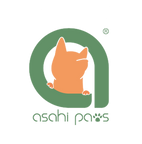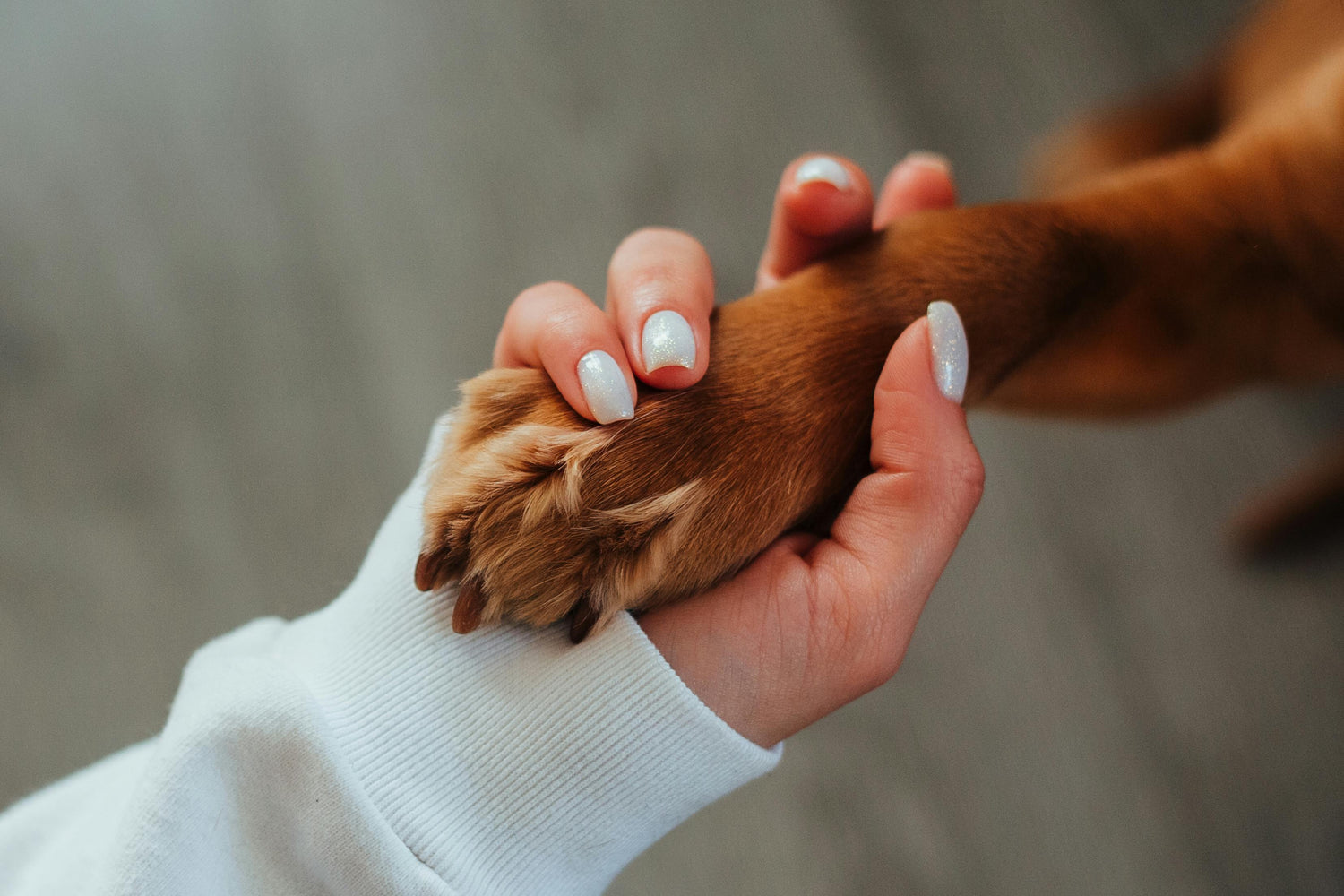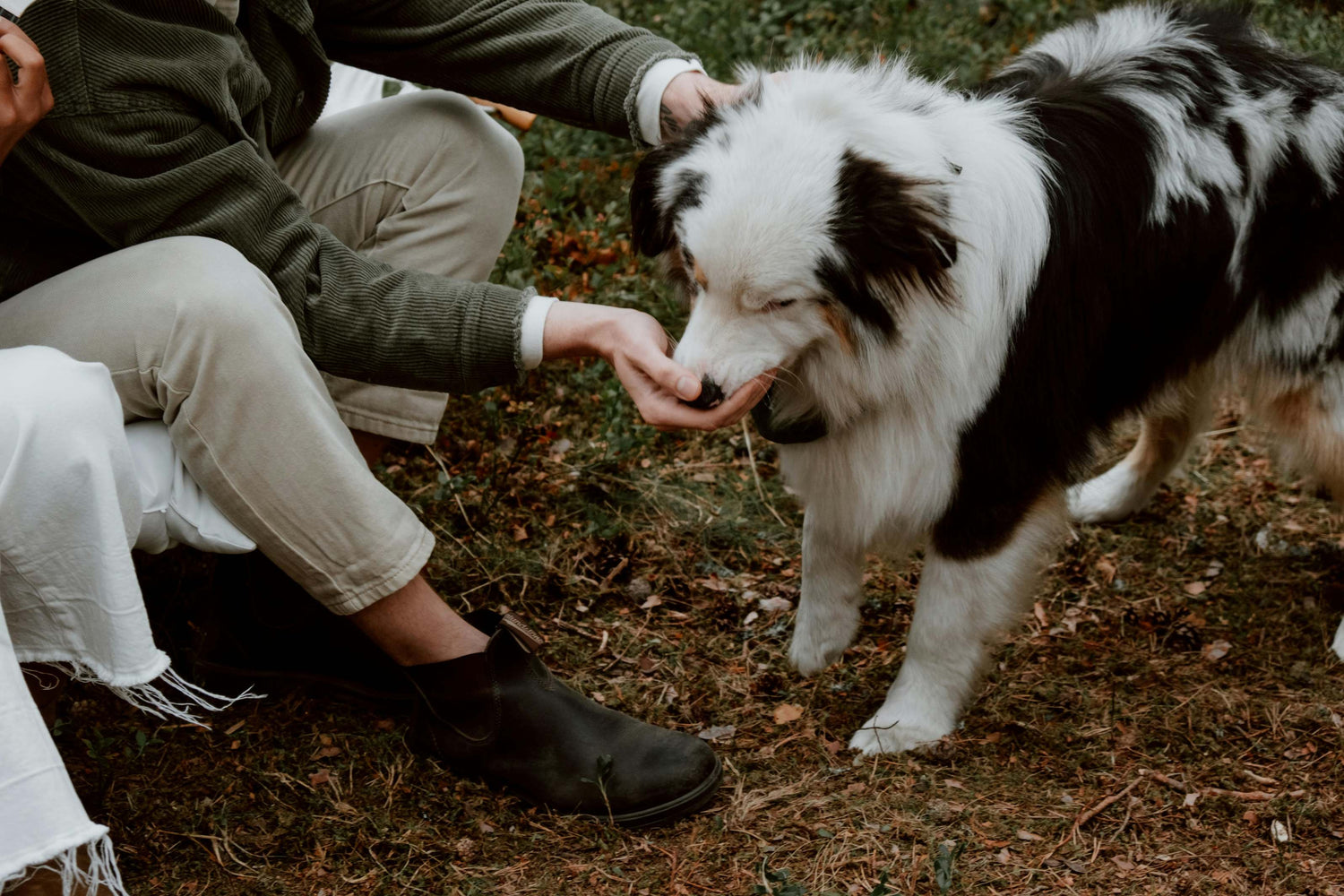Welcoming a new paw friend in the family is pleasing but training them to wee can be hectic sometimes.
In this guide, we will go over 7 essential steps to help you train your pups to wee on a pad. Follow the steps, be prepared, be patient, your puppy will be potty trained in no time!
1. Choosing a Puppy Training Pad
First and foremost, choosing the right puppy training pad is an important step. It will save a lot of time if you choose the right ones.
However, with so many options available in the market, it can be overwhelming to decide which one is best suited for your paw friends. Here are some key things to remember while choosing a puppy training pad:
Well Absorbent
Find a puppy training pad that is highly absorbent, so it can hold a good amount of liquid without leaking or spreading. Most pads will indicate their absorbency level, so be sure to check the packaging.
Built-in Attractant
In order to encourage your pups to use pads, some training pads come with an attractant scent to help them if they have difficulty adjusting to the pad. Therefore, remember to consider a pad with a built-in attractant scent to make it more appealing.
Right Size
Choose a pad that is the right size for your puppy. If the pad is too small, it won't provide enough coverage and can lead to accidents. On the other hand, a pad that's too large can be difficult for a small puppy to navigate.
Better Leak Protection
Choose a pad that is strong and durable, so it doesn't leak easily. This is especially important if you have a larger or more active puppy.
Eco-friendliness
Consider the environmental impact of the training pad. Some brands offer biodegradable and compostable options that are better for the environment.
2. Introduce Your Pups to the Training Pads
Introducing your puppy to wee wee pads is an important step in successfully training them to use them. Here are some tips to make the process smoother:
Choose the right location
Pick a location in your home that is easily accessible to your puppy and away from their food and water dishes. It should also be a spot where you can consistently keep the wee wee pads.
Show the pad to your puppy
Put the puppy training pad in front of your paw friends and let them explore the pad and get familiar with it. Allow them to sniff it and step on it to get a feel for it. Praise them and offer a treat if they interact positively with the pad.
Encourage your puppy to use the pad
When your puppy shows signs that they need to go potty, lead them to the puppy training pad and encourage them to use it. Use a cue word like "go potty" or “pee pee” to associate it with the action.
Praise and reward
When your puppy successfully uses the potty pad, immediately praise them and offer a treat. Positive reinforcement helps your puppy associate using the potty pad with a positive experience.
Repeat the process
After the successful first steps, repeat the process to make your paw friends remember it. Repeat the process regularly, especially after meals, playtime, and naps.
Monitor your paw friends
Keep an eye on your puppy and be prepared to redirect them if they start to go potty elsewhere. If they have an accident, clean it up immediately and continue with the training.
3. Create a potty-training schedule
Creating a potty-training schedule for your puppy is a crucial step in successfully training them to use the puppy training pads. Here are some things to consider to create an effective schedule:
Determine how often your puppy needs to go
Puppies typically need to go potty after eating, drinking, playing, and sleeping. Depending on their age, breed, and size, they may need to go more frequently. On average, puppies need to go every 2-3 hours.
Choose consistent times
Establish consistent times for taking your puppy to the potty pads. Plan to take them out first thing in the morning, before bed, and after meals, playtime, and naps.
Set a timer
Use a timer to alert you when it's time to take your puppy to the potty pads. This will help you stay consistent with your schedule and prevent accidents.
Monitor your paw friends
Keep an eye on your puppy's behaviour and signs that they need to go potty, such as sniffing or circling. If you notice these signs, take them to the potty pads immediately.
Adjust the schedule
If your puppy has accidents, adjust the schedule accordingly. Consider taking them out more frequently or adjusting the timing of their meals and water intake
Gradually increase the time between potty breaks
As your puppy becomes more comfortable using the potty pads, gradually increase the time between potty breaks. This will help them build bladder control and become more independent.

4. Reward Your Puppy
Puppies like to be rewarded and rewarding your puppy during potty training is critical to the training process.
Positive reinforcement helps your puppy associate going potty in the correct place with a positive experience, making them more likely to repeat the behaviour in the future. There are several ways to reward your paw friends during potty training:
Use treats
Using treat is easy to start. Offer a small, tasty treat immediately after your puppy successfully goes potty on the pad. This will help them associate going potty in the correct place with a reward.
Offer verbal praise
Your paw friends can tell whether you are happy or not via your tone.
Use a happy and encouraging tone to offer verbal praise when your puppy uses the potty pad. Say "good job" or "good boy/girl" to let them know they've done well.
Use physical affection
As puppies love physical affection, so use petting and cuddling as a reward after they go potty in the right place. This will help strengthen your bond with your puppy as well.
Be consistent
Always reward your puppy immediately after they successfully use the potty pad. This will help them associate the reward with the behaviour and reinforce their training.
5. Take the pup to the pad regularly
Taking your puppy to the potty pad regularly is an essential part of successful potty training. Here are some reasons why it's important to take your puppy to the training pad regularly:
Establish a routine
Taking your puppy to the puppy training pad regularly helps establish a routine for them. It teaches them when and where they should go potty, making it easier for them to understand and follow the training.
Prevent accidents
Taking your puppy to the potty pad regularly can prevent accidents in the house. If your puppy knows when they should go potty, they're less likely to have accidents when they're not on the training pad.
Reinforce training
Regular visits to the potty pad reinforce the training and help your paw friend learn that it's the correct place to go potty. It also gives you an opportunity to reward them for going potty in the right place.
Prevent health problems
Regular visits to the potty pad also help prevent health problems that can occur when puppies hold their bladder for too long. This includes urinary tract infections and bladder stones.
6. Switch From Pads to the Outdoors
Once your puppy is consistently using the potty pads, it's time to transition them to going potty outdoors. Here are some things to keep in mind about the switch:
Gradual transition
Start by moving the potty pad closer to the door over several days. Once the pad is next to the door, take your puppy outside to the designated potty spot and encourage them to go potty there.
Consistency is key
Establish a routine for taking your puppy outside to go potty. Take them out first thing in the morning, after meals, and before bed, as well as any other times they may need to go potty.
Follow the steps from potty pad training
Same as training your paw friends to use puppy training pads, you can always follow the previous steps: use verbal cues, praise and reward, and monitor your pups.
More importantly, it is patience. Transitioning from potty pads to going potty outside can take time. Be patient and continue to be consistent with your training.
7. Handle Accidents Calmly
Accidents are an inevitable part of potty training your puppy.
It's important to handle them calmly and not to get frustrated or angry with your puppy. Here are some tips on how to handle accidents calmly while puppy training:
Don't punish your puppy
Punishing your puppy for having an accident can cause confusion and anxiety, and it can also damage the bond between you and your puppy. Instead, focus on redirecting their behaviour to the correct place.
Clean up the accident immediately
Use an enzymatic cleaner or a wet wipe to clean up any accidents immediately. This will eliminate the odour, which can attract your puppy back to the same spot to go potty again.
Stay calm
It's important to stay calm when accidents happen. Dogs can sense our emotions, and getting angry or frustrated will only make them more anxious and confused.
Redirect your puppy
If you catch your puppy in the act of having an accident, quickly pick them up and take them to the potty pad or designated outdoor area. Once they go potty in the right place, reward them with praise and a treat.
Adjust your training
Accidents can be a sign that your may need to change the potty training. If your paw friend is having accidents frequently, consider taking them to the potty pad more often or adjusting their feeding schedule.
Conclusion
Today, we reviewed 7 essential steps to better potty train your paw friends.
Starting with a puppy training pad is an crucial step, and this is where Asahi Paws Puppy Pads shine.

To choose a proper wee wee pad can smooth the entire potty-training process. Here are the key features of Asahi Paws Puppy Pads:
- Our puppy pads are all for multi-use; they’re also Human-grade.
- Our Charcoal puppy pads provide 6 layers of leakage protection.
- Crafted with Super Absorbent Polymer, a material that can absorb up to 5 cups of liquid or 1,250ML, our puppy pads can provide excellent leakage protection.
- We use 4 sticky-adhesive tapes for stability so that your playful pups won’t mess up the spotty area.
References:
https://www.thesprucepets.com/potty-pad-training-4178382
https://www.fourpaws.com/pets-101/potty-time-and-training/training-a-puppy-to-use-wee-wee-pads
https://www.animalhumanesociety.org/resource/potty-pad-training-your-dog
https://www.thepuppyacademy.com/blog/2021/11/1/step-by-step-guide-to-crate-training-your-puppy
Disclaimer:
Part of the article is generated by ChatGPT.






